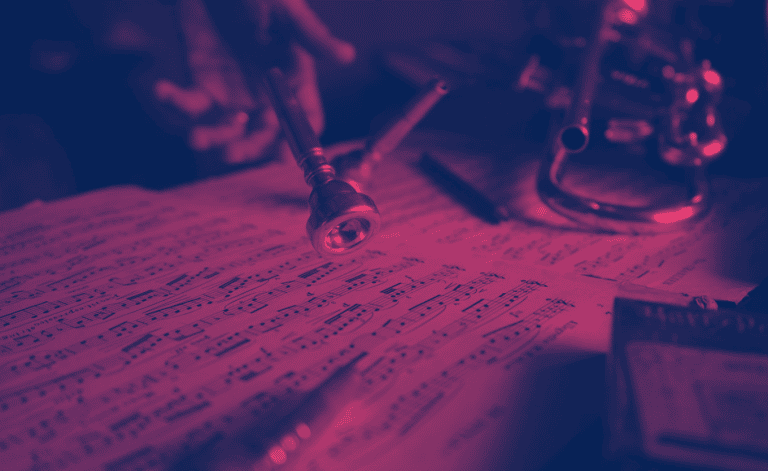You’re constantly practicing, listening, and striving to improve your ability to improvise…yet for some strange reason, the next level of playing somehow seems to elude you.
Etudes aren’t doing the trick. Scale patterns have become boring and predictable. And memorized lines simply won’t translate into amazing musical phrases.
Despite all of your time and effort, you’re still falling short of the kind of solos you wish you could play. I know exactly how this feels, learning to improvise can be especially frustrating and time consuming.
But this doesn’t mean that you have to remain at the same level forever…
You see, after years of trial and error, I’ve realized that there are a few things you can do to speed up the process and breakthrough. A small shift to get back on the right track and build your skills more effectively – something I wish I knew when I was starting out!
On our musical journey certain mindsets, mental traps, and assumptions can hold us back no matter how much we work. We might even end up diligently practicing things that won’t even help us improve.
That’s why in this lesson I’ll show you 5 simple things you can do in the practice room today to unlock the next level of your musical evolution…
1) Avoid a “Scale Mentality”

Scales are a useful technical exercise. Scales are good for building facility in all keys. And scales are something that every serious player should master…
But if you’re a musician that’s searching for a better way to create melodic lines or a reliable method for improvising over jazz standards, scales are not your answer.
One crucial step that’s often overlooked in the musical learning process is understanding precisely where scales are useful and where they aren’t…and this can be hard to do coming from the typical music education mindset.
What happens is that a large number of musicians unwittingly get locked into a “scale mentality” every time they solo.
What’s a “scale mentality” you ask??
Put simply, it’s thinking solely of scales for everything you play…
When you’re see a chord your first thought is a scale. When you encounter a chord progression you immediately turn to corresponding scales, and when you imagine a line to play or solo over tune you head right for those scales:

But it can go further than only thinking of the notes of a scale…
Scales are often used as a short-cut or reduction of larger harmonic concepts. For instance…
- a “blues scale” is a stand-in for the larger concept of blues language.
- a diminished scale or melodic minor applied to a dominant chord is a reduction of more nuanced dominant alterations or a tritone substitution.
- And it’s the same with the dorian mode or other modes.
Important harmonic ideas and progressions are skipped over, watered down, or “cheated” by using a single scale. You get a few notes to play without really learning the harmony behind it – ignoring harmonic function, melodic techniques, and musical style.
To overcome this hurdle, your job is to redefine scales in your mind and determine where and how they best fit into your musical approach.
Scales are good for:

However, scales shouldn’t be…

Making this small distinction can be the difference between going in circles in your practice routine and actually moving forward. You’re still practicing scales and but you aren’t relying on them as a lifeline in every solo you play.
*This doesn’t mean that you can skip scales or avoid them altogether. It means that once you master them in all keys, you need to move beyond them.
So take a moment and think about your own playing right now…are you relying on scales to navigate chords, are you using scales as your main approach to improvisation??
2) Learn some language!
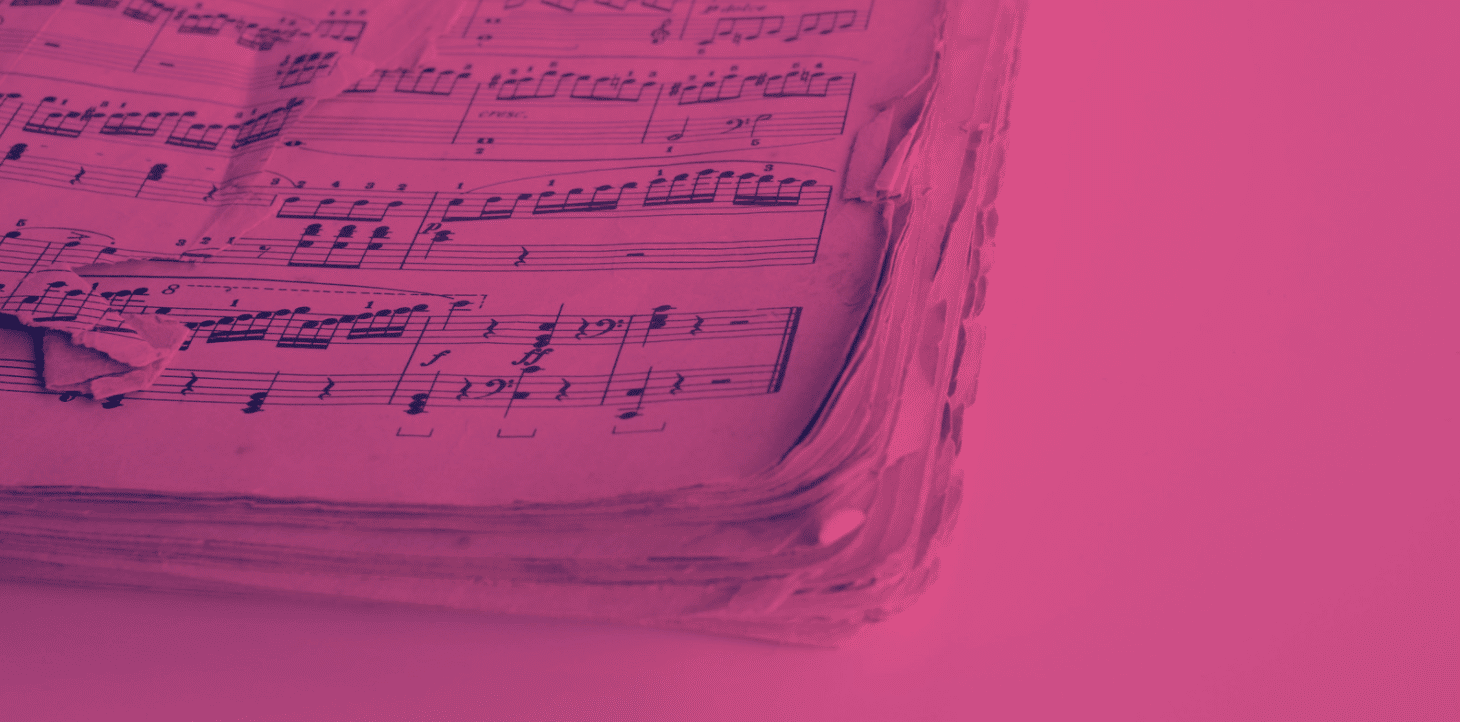
After you ditch the scale mentality, the first question that inevitably pops up is: What exactly am I going to play now…how am I going to come up with musical ideas?
If scales are essentially the musical alphabet, the next logical step in developing your solos is learning some simple words and phrases.
…in other words building a vocabulary so you can start communicating your musical ideas!
Just like learning a spoken language, a musical vocabulary is developed from hearing other people “speak” and tapping into the living tradition of common words & phrases.
It’s important to remember that you aren’t expected to come up with a working vocabulary from scratch when you’re starting out, you learn by imitating the words and ideas of other fluent speakers.
For improvisers, this means transcribing some simple melodic ideas and language from great players.
Language is a musical statement with intent and defined rhythm that relates to the underlying harmony. In essence, it’s learning how to “speak” over the fundamental sounds you’ll find in any tune.
The larger goal is to transition to playing musical ideas in your solos rather than matching notes and scales to individual chords.
Start with the basic chords: Major, minor, and dominant. Aim to get one piece of language for each type of chord. Here are a few examples to get you started…
Major language:
Chet Baker on I’ll Remember April

Minor language:
Sonny Rollins on Strode Rode

Dominant language:
Herbie Hancock on One Finger Snap

With these three examples of language you have a melodic starting point, a model for “speaking” over each chord. From here you can isolate and extract musical techniques that you can then practice and apply to your own solos.
Remember, language isn’t only a line or notes, it’s a musical idea, it’s style, sound, and rhythm. Language isn’t just what a player plays, but how they play it.
This should be the goal of anything you improvise – a musical idea with feeling and intent – not just notes!
Transcribe and study every detail of even the most simple seeming lines from your favorite players. Here are a few resources that will help you quickly build your skills:
- First check out this Premium lesson: The Complete Guide to Finding Language
- And if you want a step-by-step course on learning the jazz language, check out our course Melodic Power

3) Study how Harmony functions in tunes
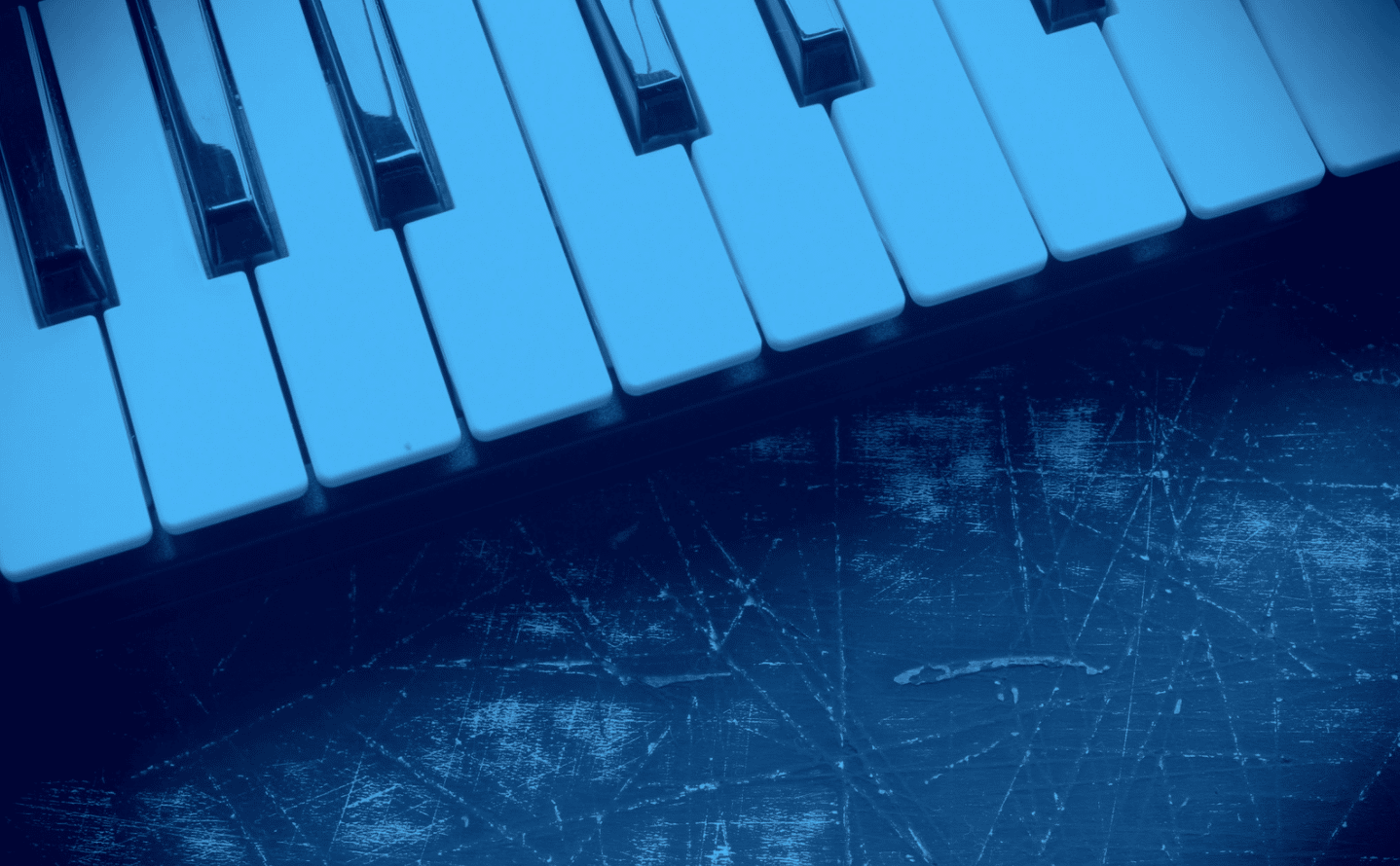
Playing an amazing solo over a tune isn’t just about picking out individual notes, crafting long melodic lines, or searching for the perfect guide tone line…
A big part of improvising goes back to understanding the harmonic relationships within a tune. You need to know exactly how the chords are put together in a logical way and how they progress from one to the next within a key.
The problem is that a study of harmony, or what many people think of as “music theory,” can often be seen as tedious. Memorized chords, complex progressions, and endless definitions…
The mistake however, is separating this harmonic understanding from the skill of improvisation or the tunes we play. If you skip over harmony or neglect to consider it in the tunes you play, your melodic skills will suffer.
Remember, a beautiful melodic line is vitally connected to the harmony. Melody is harmony in a linear form, they go hand in hand.
For many musicians this understanding is the missing link or “aha moment,” that will transform the way you play jazz standards and improve your ability to improvise melodic lines.

The good news is that the majority of standards you’ll play are built around very basic harmonic relationships, and the key to navigating these progressions is understanding where they come from and how they work within the tune.
To see what I mean, let’s take a few measure of the common jazz standard I Didn’t Know What Time It Was…
If you look at the opening four measures of the tune you’ll find the following progression:

Simply looking at the chord symbols without listening or studying the harmonic relationships, you might gravitate toward isolating individual chords, inserting scales, or even licks:
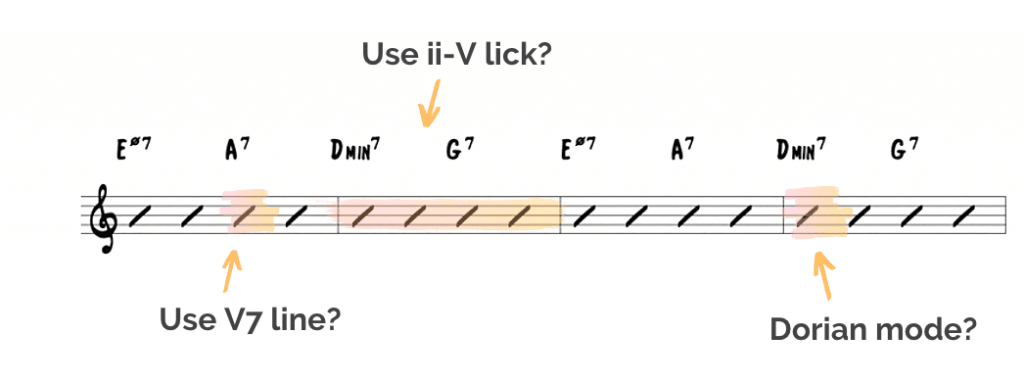
However, this approach will put you down a dead end. You can’t simply look at one chord by itself, insert scales or licks, and expect to come out with a beautiful melodic phrase over the entire progression.
To do this you need to understand the chord relationships…
Now let’s look at these four bars in terms of harmonic function within the larger key of D minor:
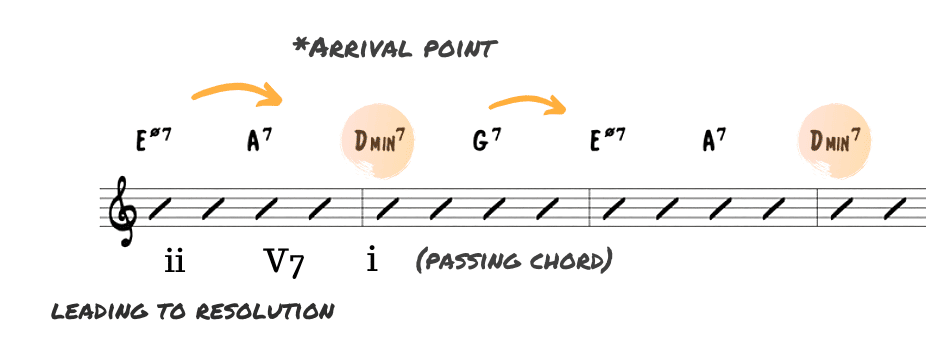
Now you’re operating within an established key and there is harmonic movement that you can incorporate into your melodic lines. This is an approach that will lead to a musical solo.
For a few more examples of studying a standard progression and figuring out the harmonic relationship at work, check out the full lesson on I Didn’t Know What Time It Was or this lesson on It Could Happen To You.
4) Start hearing melody and harmony in your solos

On your musical journey, it’s important to remember that improvisation isn’t just a mental exercise. No matter how hard you try, you can’t think your way to a great solo or use a formula to find the perfect notes…
If your goal is to create meaningful music, you actually need to use your ears.
For years I tried to circumvent the process by memorizing patterns, practicing scales in every direction, and writing out lines. Yet I never really was “improvising” the way I hoped to…all because I was ignoring my ears.
The good news however, is that the solution for this is painfully simple – start training your ears!
The goal isn’t to have perfect pitch or an ability to name every note of a chord on your first try, rather it’s to be able to easily hear and identify the basics of harmony & melody and navigate simple tunes using your ears.
You can start by incorporating some simple ear training exercises into your daily practice routine:
- Identify basic chord quality and chord tones by ear
- Start singing simple intervals and melodies
- Learn a melody by ear, sing it, and play it on your instrument
And if your looking for a clear, step-by-step method for improving your ear once and for all, check out The Ear Training Method.
There is always room to improve your ear and it’s something that you’ll always be improving, but even a little practice each day will lead to progress.
5) Start Small and go slow

Becoming an amazing improviser is a goal that can’t be accomplished in a few practice sessions…It’s a journey that takes time and focused practice, there are a number of small, yet important steps along the way.
The key to finding improvement lies not only in what you practice, but how you approach each practice session.
Rather than big projects or complex routines, progress comes from focusing on small skills and ideas and mastering the little details.
Remember, the skills required for a great solo are dependent upon one another and flow in succession. If you skip or ignore one or have a weak link, it will affect everything in your playing.
The truth is, we’re all guilty of trying to take on too much at once or rushing through the fundamentals – we attempt to learn long lists of tunes, jam for hours with play-a-longs, and gravitate toward the most advanced ideas we can get our hands on…
But if this approach becomes the norm, your progress will suddenly come to a standstill.
Your goal should be to shift your practice approach from big projects and lofty goals to the aim of mastering small details. This will make a profound impact and noticeable change in the way you improvise.
Here are a few ideas for implementing a slow and focused practice approach:
- Master one chord
- Master one piece of language
- Master one small part of a chord progression
- Master one chord relationship
- Master one articulation
- Master one rhythm
This is the type of practice that will noticeably improve your playing, a daily approach that will lead to results.
